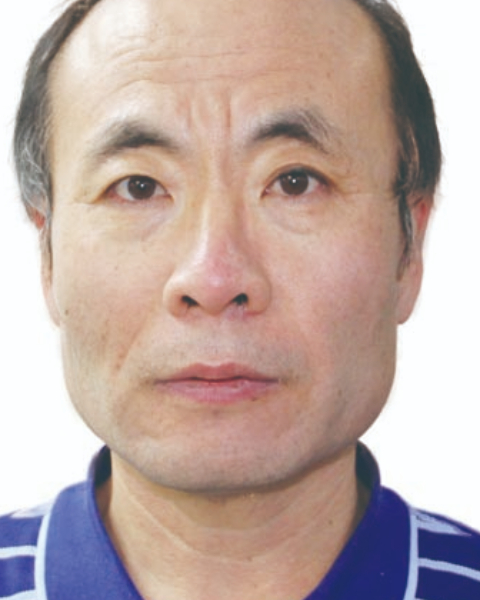SS 12 - GI 1: Esophago-gastric Cancer: Revisiting Radiotherapy, Investigating Immunotherapy, and Mobilizing MRD
169 - Quality of Life Among Long-Term Survivors of Oesophageal Cancer Cured By Definitive Radiotherapy: A Cross-Sectional Study
Monday, September 30, 2024
8:40 AM - 8:50 AM ET
Location: Room 151

Qingsong Pang, MD, PhD
Tianjin Cancer Hospital
Tianjin, Tianjin
Presenter(s)
Q. Pang1, J. Dong2, W. Zhang3, T. Zhang3, X. Chen3, Y. Zhang4, H. Ge5, J. Li6, J. Wang7, X. Wang8, L. Zhao9, J. Li10, R. Yu11, and D. Ma12; 1Department of Radiation oncology, Tianjin Medical University Cancer Institute and Hospital, National Clinical Research Center for Cancer, Key Laboratory of Cancer Prevention Therapy, Tianjin, Tianjin, China, 2Department of Nutrition Therapy,Tianjin Medical University Cancer Institute and Hospital, National Clinical Research Center for Cancer, Key Laboratory of Cancer Prevention Therapy, Tianjin, China, 3Department of Radiation oncology, Tianjin Medical University Cancer Institute and Hospital, National Clinical Research Center for Cancer, Key Laboratory of Cancer Prevention Therapy, Tianjin, China, 4Department of Thoracic Oncology, Anyang Tumor Hospital, The Affiliated Anyang Tumor Hospital of Henan University of Science and Technology, Henan Medical key Laboratory of Precise Prevention and Treatment of Esophageal Cancer, Anyang, China, 5The Affiliated Cancer Hospital of Zhengzhou University, Zhengzhou, China, 6Shanxi Province Cancer Hospital/ Shanxi Hospital Affiliated to Cancer Hospital, Chinese Academy of Medical Sciences/Cancer Hospital Affiliated to Shanxi Medical University, Taiyuan, China, 7Department of Radiation Oncology, the Fourth Hospital of Hebei Medical University, Shijiazhuang, China, 8Department of Radiation Oncology, National Cancer Center/National Clinical Research Center for Cancer/Cancer Hospital, Chinese Academy of Medical Sciences and Peking Union Medical College, Beijing, China, 9Department of Radiation Oncology, Xijing Hospital, Fourth Military Medical University., Xi’an, China, 10Department of Radiation Oncology, Clinical Oncology School of Fujian Medical University, Fujian Cancer Hospital, Fuzhou, Fujian, China, 11Department of Radiation Oncology, Peking University Cancer Hospital & Institute,Key Laboratory of Carcinogenesis and Translational Research (Ministry of Education/Beijing), Beijing, China, 12Department of Oncology, Affiliated Hospital of North Sichuan Medical College., Nanchong city, China
Purpose/Objective(s): A cross-sectional study was conducted to investigate the health-related quality of life (HRQoL) of 2-5 years oesophageal cancer survivors cured by definitive radiotherapy(dRT). Materials/
Methods: The study was based on a cross-sectional survey of survivors of oesophageal cancer undergoing dRT at 25 institutions across the country between 2017.7-2020.7. Patients who survived without disease progression were subject to our study. The investigation included European Organisation for Research and Treatment of Cancer (EORTC) Quality of Life Questionnaire C30 and OES18, Malnutrition Universal Screening Tool(MUST), Distress Thermometer (DT) scales, and late toxicity grade =3 associated with dRT.
Results: A total of 11,573 patients with oesophageal cancer received dRT from 25 institutions during 2017.7-2020.7, and 1,140 survivors were eligible with this investigation and the median time to completed dRT was 43.6 months. The results indicated that the global health status score of 1140 survivors was 80.4±19.2, the functional scores were more than 85, and the appetite loss and dysphagia scored higher on the symptom scale. 7.5% of patients were low weight and 9.4% were at high risk for malnutrition. The proportion of high psychological distress were 4.1%, and 10.1% of the patients occurred late toxicity grade =3 related to radiotherapy, mainly esophageal toxicity and pulmonary toxicity. Multivariate analysis showed that MUST score =1 and DT score=4 were significantly associated with quality of life score <80.
Conclusion: Although the global HRQoL of oesophageal cancer survivors are satisfactory within 2-5 years after dRT, appetite loss and dysphagia may persist in some survivors for a long time. Nutritional status and psychological distress, rather than late toxicity, were the important factors affecting HRQoL in the long time.
Purpose/Objective(s): A cross-sectional study was conducted to investigate the health-related quality of life (HRQoL) of 2-5 years oesophageal cancer survivors cured by definitive radiotherapy(dRT). Materials/
Methods: The study was based on a cross-sectional survey of survivors of oesophageal cancer undergoing dRT at 25 institutions across the country between 2017.7-2020.7. Patients who survived without disease progression were subject to our study. The investigation included European Organisation for Research and Treatment of Cancer (EORTC) Quality of Life Questionnaire C30 and OES18, Malnutrition Universal Screening Tool(MUST), Distress Thermometer (DT) scales, and late toxicity grade =3 associated with dRT.
Results: A total of 11,573 patients with oesophageal cancer received dRT from 25 institutions during 2017.7-2020.7, and 1,140 survivors were eligible with this investigation and the median time to completed dRT was 43.6 months. The results indicated that the global health status score of 1140 survivors was 80.4±19.2, the functional scores were more than 85, and the appetite loss and dysphagia scored higher on the symptom scale. 7.5% of patients were low weight and 9.4% were at high risk for malnutrition. The proportion of high psychological distress were 4.1%, and 10.1% of the patients occurred late toxicity grade =3 related to radiotherapy, mainly esophageal toxicity and pulmonary toxicity. Multivariate analysis showed that MUST score =1 and DT score=4 were significantly associated with quality of life score <80.
Conclusion: Although the global HRQoL of oesophageal cancer survivors are satisfactory within 2-5 years after dRT, appetite loss and dysphagia may persist in some survivors for a long time. Nutritional status and psychological distress, rather than late toxicity, were the important factors affecting HRQoL in the long time.
